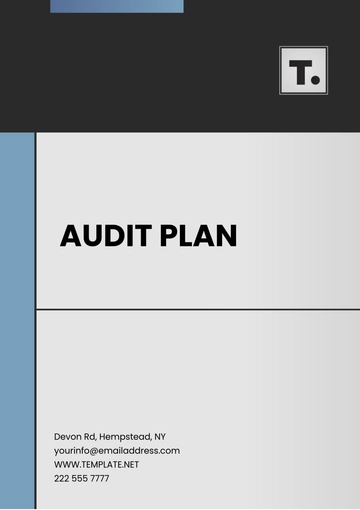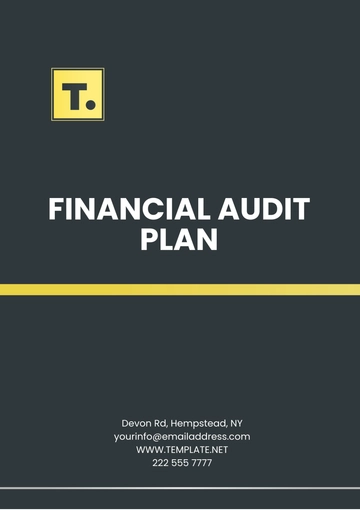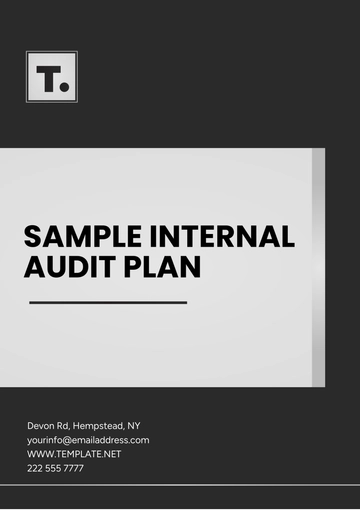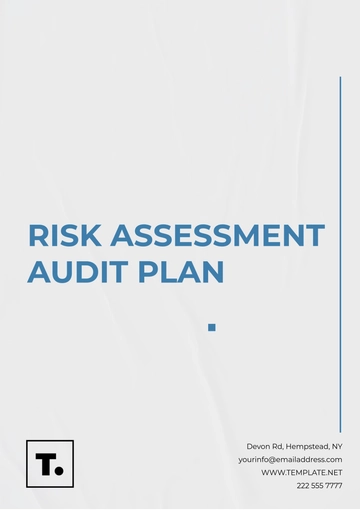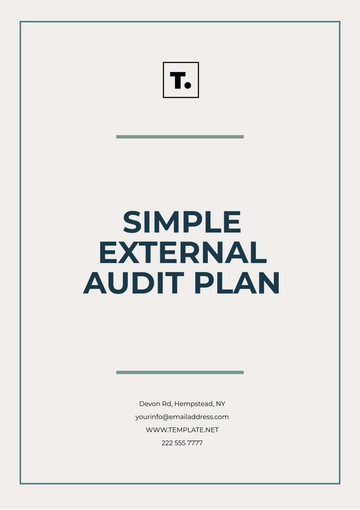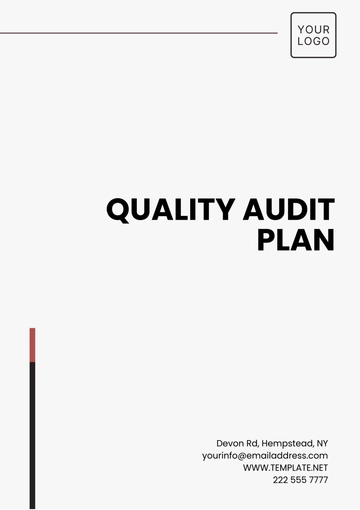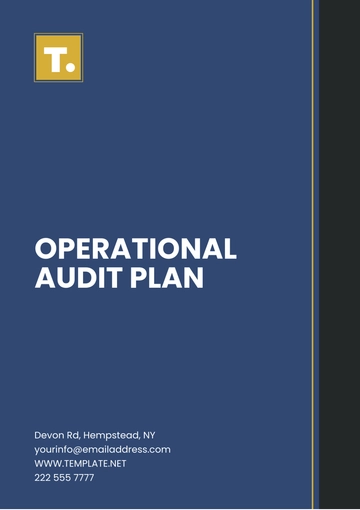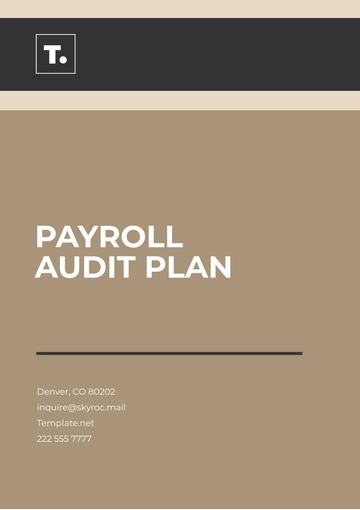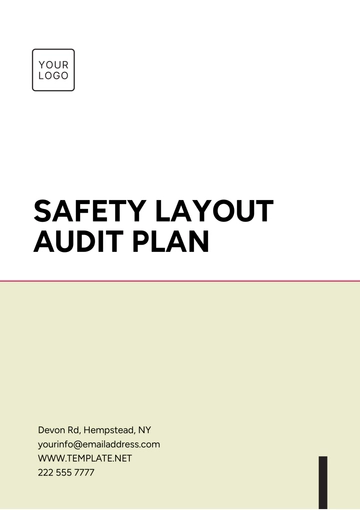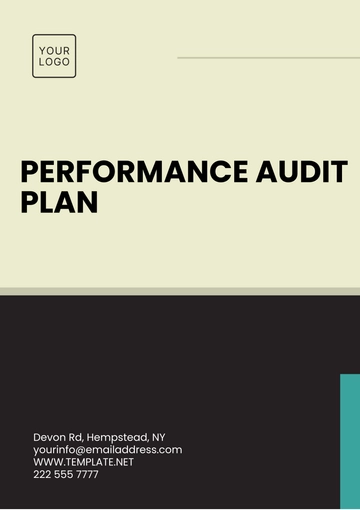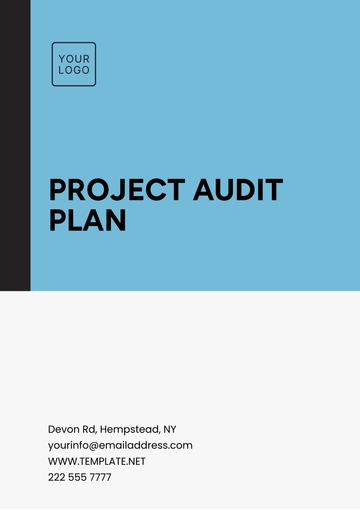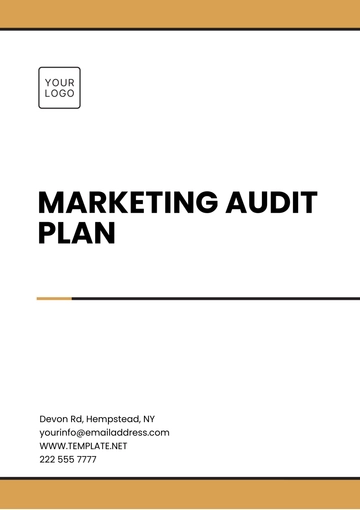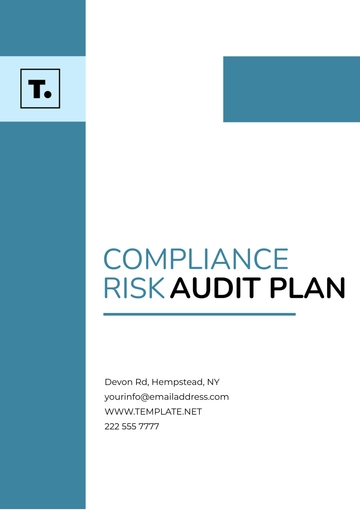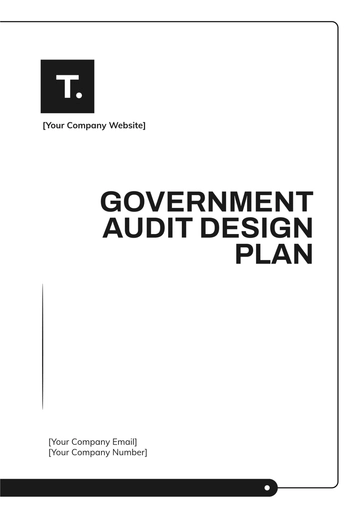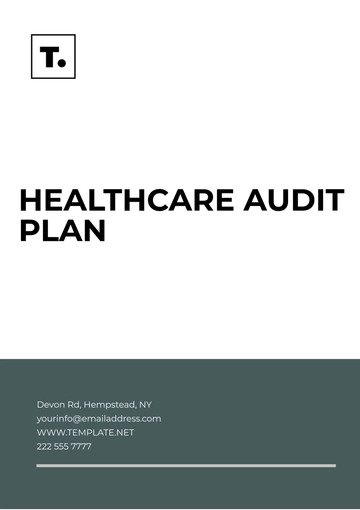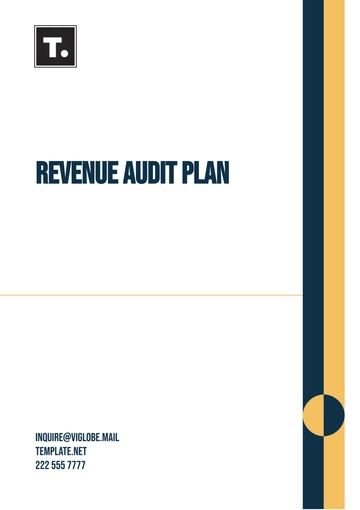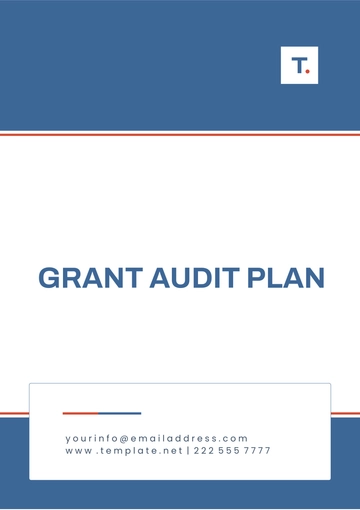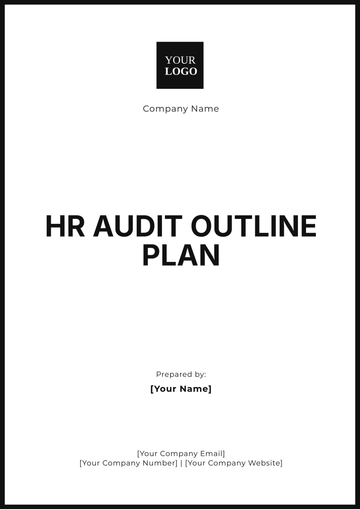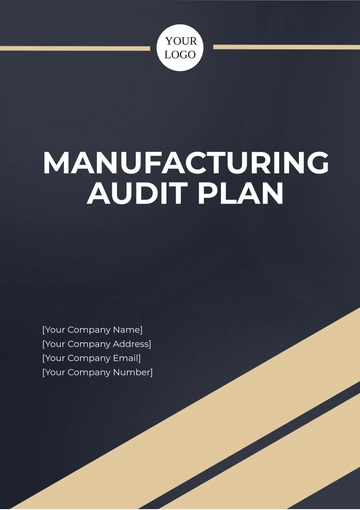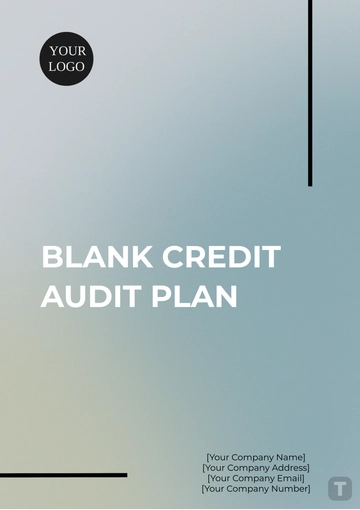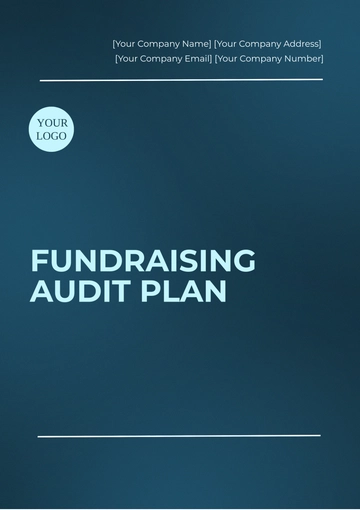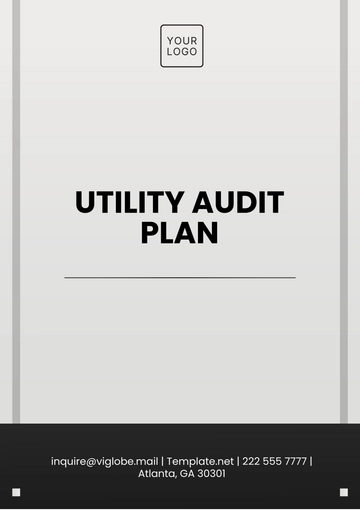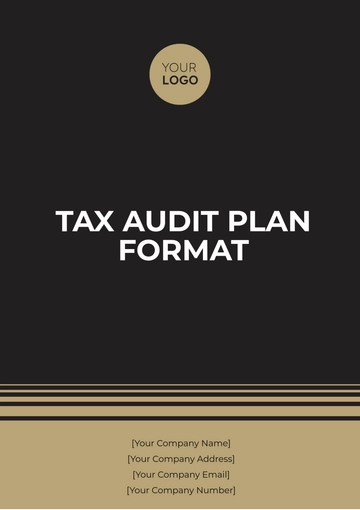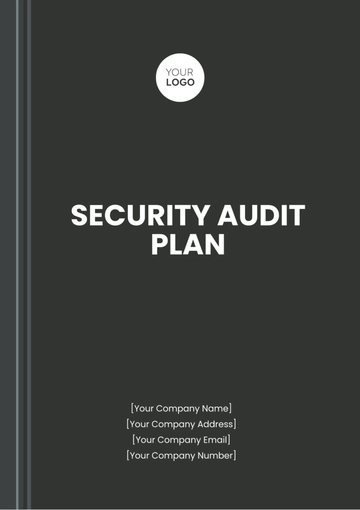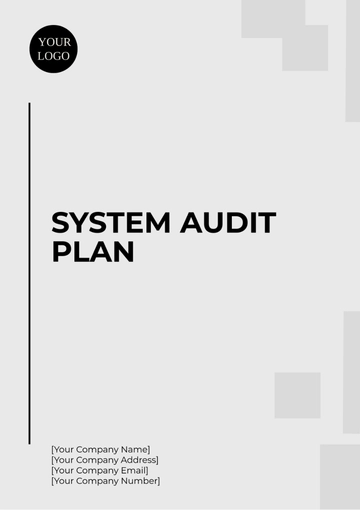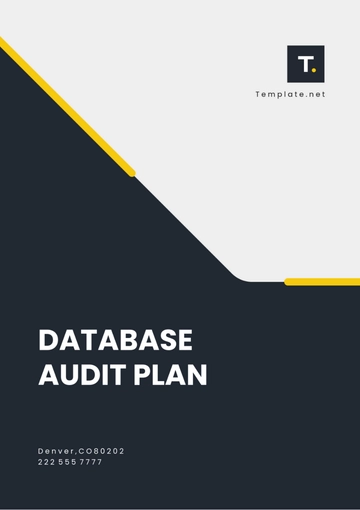Free Government Audit Design Plan
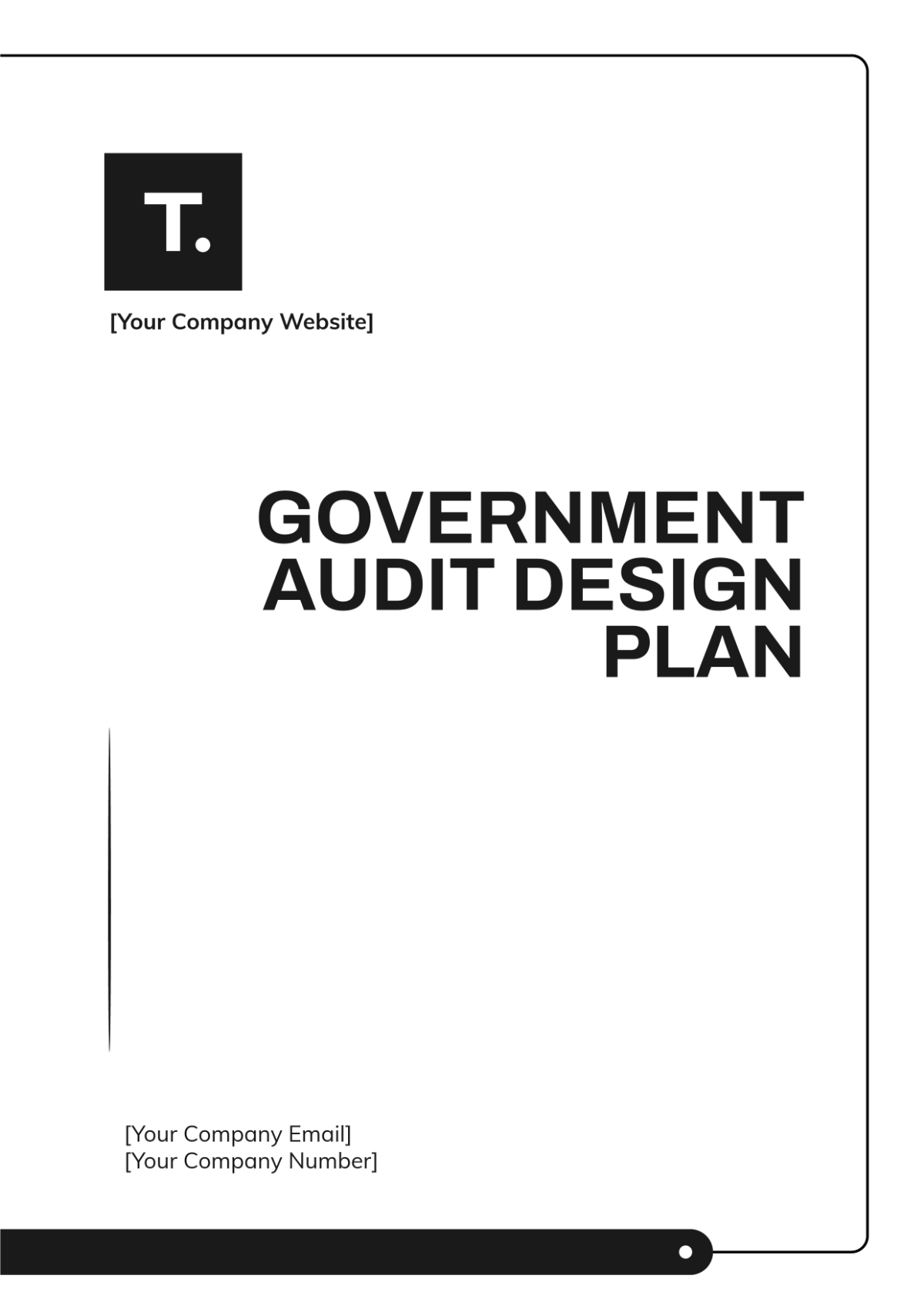
I. Audit Objective
The primary objective of this audit is to assess the effectiveness and compliance of financial management practices within selected public sector organizations. This includes evaluating adherence to established regulations, identifying areas of inefficiency, and ensuring the proper use of public funds.
Specifically, the audit aims to:
Evaluate budget planning and execution processes.
Assess the accuracy and completeness of financial reporting.
Identify potential areas for cost savings and efficiency improvements.
II. Scope of Audit
Geographical Scope:
This audit will cover public sector organizations within California.Period:
The audit will focus on financial activities from January 1, 2069, to December 31, 2069.Subject Matter:
Financial management practices, including budget allocation, expenditure tracking, compliance with state and federal regulations, and internal controls.
III. Methodology
Data Collection:
Interviews: Conduct interviews with key financial personnel from the targeted organizations, including finance directors, budget officers, and compliance officers.
Documentation Review: Analyze relevant financial documents, including budgets, expense reports, financial statements, and internal audit reports.
Sampling Technique:
Utilize a stratified random sampling approach to ensure diverse representation across different departments and financial activities. A sample size of 20% of total transactions will be selected for detailed examination.Analysis Techniques:
Perform qualitative and quantitative analyses of financial data, focusing on variances between budgeted and actual expenditures.
Employ statistical methods to assess compliance levels and identify trends in financial performance.
IV. Audit Team Composition
Lead Auditor:
John Smith, Senior Auditor - Responsible for overall audit execution, coordination, and reporting.Team Members:
Sarah Johnson, Compliance Specialist - Expert in financial compliance and regulatory requirements.
Michael Lee, Data Analyst - Specialist in data analysis and visualization, focusing on identifying trends and anomalies.
Emily Davis, IT Auditor - Focused on the assessment of financial management systems and cybersecurity controls.
V. Audit Schedule
Activity | Start Date | End Date |
|---|---|---|
Planning Phase | March 1, 2070 | March 15, 2070 |
Fieldwork Phase | March 16, 2070 | April 30, 2070 |
Data Analysis | May 1, 2070 | May 15, 2070 |
Draft Report Preparation | May 16, 2070 | May 31, 2070 |
Management Review | June 1, 2070 | June 15, 2070 |
Final Report Submission | June 30, 2070 | July 1, 2070 |
VI. Risk Assessment
Potential Risks:
Non-compliance with financial regulations may result in legal repercussions and loss of public trust.
Inadequate documentation practices lead to discrepancies in financial reporting.
Misallocation of funds or resources resulting in operational inefficiencies.
Mitigation Strategies:
Implement regular training programs for financial personnel to enhance knowledge of compliance requirements.
Enhance internal control systems, including automated checks and balances, to ensure accountability and transparency in financial transactions.
VII. Expected Outcomes
Identification of strengths and weaknesses in financial management practices, leading to targeted recommendations for improvement.
Enhanced accountability in the use of public funds, fostering greater trust and confidence among stakeholders, including the public and oversight bodies.
Recommendations for the implementation of best practices in budget planning and financial reporting.
VIII. Reporting and Communication
Draft Report:
A preliminary report will be shared with management for feedback by June 15, 2070.Final Report:
The final audit report will be submitted to relevant stakeholders, including the Governor's Office and the State Legislature, by July 1, 2070.Follow-up:
A follow-up meeting will be scheduled to discuss audit findings and recommendations within 30 days of the report submission. This meeting will include key stakeholders from the audited organizations to ensure transparency and foster collaborative improvement efforts.
- 100% Customizable, free editor
- Access 1 Million+ Templates, photo’s & graphics
- Download or share as a template
- Click and replace photos, graphics, text, backgrounds
- Resize, crop, AI write & more
- Access advanced editor
Ensure thorough and accurate government audits with Template.net’s Government Audit Design Plan Template. This fully customizable template is editable in our Ai Editor Tool, providing a clear structure for auditing government operations and regulations. Tailor it to your specific audit requirements for effective and compliant audits.
You may also like
- Finance Plan
- Construction Plan
- Sales Plan
- Development Plan
- Career Plan
- Budget Plan
- HR Plan
- Education Plan
- Transition Plan
- Work Plan
- Training Plan
- Communication Plan
- Operation Plan
- Health And Safety Plan
- Strategy Plan
- Professional Development Plan
- Advertising Plan
- Risk Management Plan
- Restaurant Plan
- School Plan
- Nursing Home Patient Care Plan
- Nursing Care Plan
- Plan Event
- Startup Plan
- Social Media Plan
- Staffing Plan
- Annual Plan
- Content Plan
- Payment Plan
- Implementation Plan
- Hotel Plan
- Workout Plan
- Accounting Plan
- Campaign Plan
- Essay Plan
- 30 60 90 Day Plan
- Research Plan
- Recruitment Plan
- 90 Day Plan
- Quarterly Plan
- Emergency Plan
- 5 Year Plan
- Gym Plan
- Personal Plan
- IT and Software Plan
- Treatment Plan
- Real Estate Plan
- Law Firm Plan
- Healthcare Plan
- Improvement Plan
- Media Plan
- 5 Year Business Plan
- Learning Plan
- Marketing Campaign Plan
- Travel Agency Plan
- Cleaning Services Plan
- Interior Design Plan
- Performance Plan
- PR Plan
- Birth Plan
- Life Plan
- SEO Plan
- Disaster Recovery Plan
- Continuity Plan
- Launch Plan
- Legal Plan
- Behavior Plan
- Performance Improvement Plan
- Salon Plan
- Security Plan
- Security Management Plan
- Employee Development Plan
- Quality Plan
- Service Improvement Plan
- Growth Plan
- Incident Response Plan
- Basketball Plan
- Emergency Action Plan
- Product Launch Plan
- Spa Plan
- Employee Training Plan
- Data Analysis Plan
- Employee Action Plan
- Territory Plan
- Audit Plan
- Classroom Plan
- Activity Plan
- Parenting Plan
- Care Plan
- Project Execution Plan
- Exercise Plan
- Internship Plan
- Software Development Plan
- Continuous Improvement Plan
- Leave Plan
- 90 Day Sales Plan
- Advertising Agency Plan
- Employee Transition Plan
- Smart Action Plan
- Workplace Safety Plan
- Behavior Change Plan
- Contingency Plan
- Continuity of Operations Plan
- Health Plan
- Quality Control Plan
- Self Plan
- Sports Development Plan
- Change Management Plan
- Ecommerce Plan
- Personal Financial Plan
- Process Improvement Plan
- 30-60-90 Day Sales Plan
- Crisis Management Plan
- Engagement Plan
- Execution Plan
- Pandemic Plan
- Quality Assurance Plan
- Service Continuity Plan
- Agile Project Plan
- Fundraising Plan
- Job Transition Plan
- Asset Maintenance Plan
- Maintenance Plan
- Software Test Plan
- Staff Training and Development Plan
- 3 Year Plan
- Brand Activation Plan
- Release Plan
- Resource Plan
- Risk Mitigation Plan
- Teacher Plan
- 30 60 90 Day Plan for New Manager
- Food Safety Plan
- Food Truck Plan
- Hiring Plan
- Quality Management Plan
- Wellness Plan
- Behavior Intervention Plan
- Bonus Plan
- Investment Plan
- Maternity Leave Plan
- Pandemic Response Plan
- Succession Planning
- Coaching Plan
- Configuration Management Plan
- Remote Work Plan
- Self Care Plan
- Teaching Plan
- 100-Day Plan
- HACCP Plan
- Student Plan
- Sustainability Plan
- 30 60 90 Day Plan for Interview
- Access Plan
- Site Specific Safety Plan
